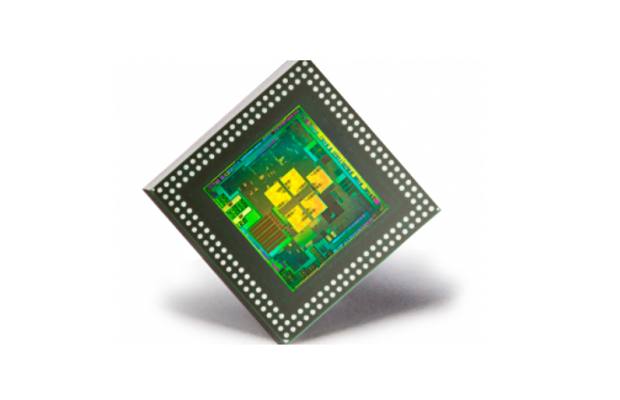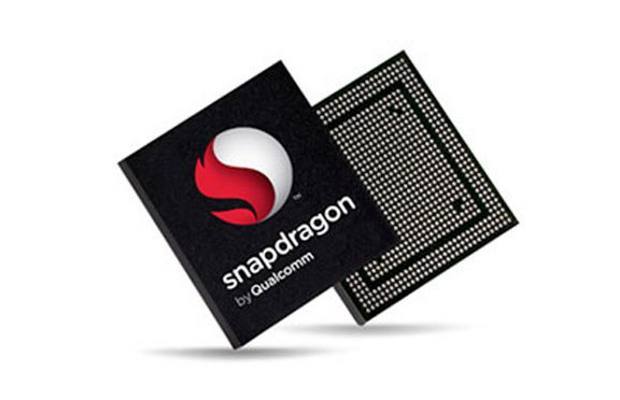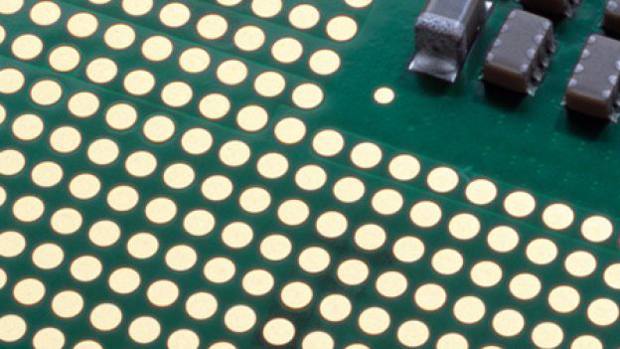- Back to Home »
- Tricks »
- Quad-Core vs Dual-Core Mobile Processor ._._._._.
Posted by : Rather Asif
Tuesday, May 14, 2013
Quad-Core vs Dual-Core Mobile Processor ._._._._.
Difference: Mobile processors vs PC processors
The basic difference between processors for computers and those for mobile phones is the types of instruction sets supported based on the architecture of the chipset. Processors for computers can provide higher performance by supporting complex instruction sets to carry out a variety of processing tasks simultaneously. However, the mobile processors meant for mobile devices provide performance based on reduced (or simplified) instruction sets by faster execution of each instruction. In a nutshell, the processors meant for computers lay emphasis on the hardware and use complex instruction sets to carry out the processing tasks. Processors for mobile phones, on the other hand, emphasize the software and RAM where the assembly line code is being stored. One of the obvious differences is that mobile processors in smartphones or tablets are not physically upgradable.
Silicon chip designers managed to include two individual processing cores on a single die and thus dual-core processors were brought. Here, cramming two individual processor cores is very different from combining two single-core processors. Dual-core mobile processors share the work of carrying out instruction sets by improving the performance per cycle. Quad-core mobile processors are basically the four individual processing cores integrated on a single die in such a way that all four cores can be used to deliver higher level performance.
So quad-core mobile processors are made in the same way as dual-core mobile processors with a lot of difference and emphasis on the architecture as well as other features. Dual-core processors can be perceived as two brains of similar potential at work to run apps, tasks and boost performance by double the capacity of a single core processor. Similarly, quad-core processors can be imagined to carry out the same level of tasks, apps and other processes with twice the power of dual-core processors. Over the course of this feature, you will slowly discover the merits and demerits of each type.
Impact
Mobile processors based on ARM architecture support reduced instructions sets, but require large code sizes to achieve particular processing tasks. Now these tasks can be carried out by single brain (read: core) in case of a single-core processor in a certain amount of time. A dual brain processor can do it more quickly compared to the single brain processor. While the quad brain processor can do it in almost one fourth or less time than a single brain chip. That means, the task gets divided and executed quickly.
Therefore, quad-core mobile processors should deliver twice the performance of dual-core processors. However, the actual performance is dependent on customizable core clocks, memory bandwidth, memory cache and so on.
For instance, Qualcomm's mobile processors allow customizing the processor cores where the mobile phone maker can adjust the clock speed of the cores individually. The multi-core architecture is well suited for multi-tasking between running applications.

A quad-core processor with four cores can carry out the multi-threading more efficiently. The multi-threads are basically programmed instructions in a specific sequence to be executed with the single processor core. On the quad-core processor, every core presents the capability of executing a sequence of programmed instructions and thus collectively they execute the threads simultaneously.
The core difference lies in the architecture, which determines the ability of the processing cores to handle the sequence of instructions simultaneously. So even if you buy a smartphone with a quad-core processor for Rs 15,000, it will not provide the smoothness and power of high-end smartphones with quad-core mobile processors.
Now, it is not only about processing muscle. For now, features such as built-in modems act as radio chips for cellular networks. That results in slimmer and lighter smartphones.
Performance
The performance of any processor, whether it is dual-core or quad-core depends on two major factors - architecture and clockspeed. These two factors must be considered together and not individually while choosing the best possible processor for a required output. If a processor has a higher clock speed but low-power architecture, then it may not be able to carry heavy processing tasks as a high-power yet moderate clockspeed processor would.
Clockspeed is the rate at which the processor core completes one processing cycle. Typically measured in megahertz or gigahertz, processors these days come with a marginal clockspeed difference. The clockspeed can be used to compare processors when they are of the same make and architecture. For instance, the Nvidia Tegra 3 processor clocked at different clockspeeds can be compared to determine the best option because technically the system on chip carries the same architecture but at different clockspeeds.
A number of companies acquire the license from ARM and come out with their own custom mobile processor with different components on it. As of now, there are several ARM architecture based mobile processors out there, of which the latest one comes with several new features and, most importantly, boost in performance. Hence, comparing the clockspeed of one processor makes sense and comparing the clockspeed of two different processors, especially custom processors carrying similar architecture, does not make sense.
Battery
It goes without saying that higher the number of cores, higher is the battery consumption. However, it's not exactly twice the battery consumption because the quad-cores are architectured such that they try to conserve as much power as possible. Unlike processors meant for computers, quad-core mobile processors cannot switch off one or more processor cores.

Due to higher power consumption, phone makers pack higher mAh batteries in mobile phones. However, power management features are implemented for both dual-core and quad-core smartphones. Modern day processors come with power management and power control features built-in.
The memory could be the RAM (Random Access Memory) and ROM (Read Only Memory). The latter type of memory, also referred to as on-board storage, basically acts as flash storage for the assembly and operating system level code in an organized manner. Typically, an Android operating system update requires unpacking the update package and then patching the files that exist on the ROM. So, typically, if there is 4 GB on-board memory then the phone does become slow because a majority of apps are developed in a way to dump the cache files on the ROM. As a result the phone becomes slow and performs sluggishly.
When it comes to RAM, the processor takes help from the RAM. That's why we always say, more RAM does deliver smooth processor performance. While most high end smartphones come with 2 GB RAM, mid-range to budget level smartphones come with 1 GB to 512 MB RAM. However, there is a huge difference in performance between different generations having varying memories. For instance, the LPDDR3 (Low Power Dynamic Data Range 3) memory performs relatively faster, and offers better memory bandwidth to carry out more instructions quickly in larger cache sizes, compared to the LPDDR2 memory.
Keeping technical jibberish aside, more memory will help the processor to carry out ] tasks quickly and result in smoother performance. However, one must not forget that each mobile operating system has been designed and developed differently. That means the resulting performance may be different with the same amount of RAM.
User experience
Dual-core processors did give a push to user experience where the device could easily carry out multi-tasking with a few apps running in the background. Quad-core mobile processors are like raging bulls and allow handset makers like Samsung, HTC, LG, Huawei and others to create their own custom user interface on top of the vanilla Android user interface.

A smartphone delivers a unique user experience depending on the optimization made in the code. Since mobile processors are developed with emphasis on the software, developers can make the best of that, which is exactly why the top end smartphones appear super fast and fluid compared to mid range or entry level devices.
Price
Quad-core mobile processors are relatively costly to make for the obvious reasons, for they require more architectural changes and attention than a dual-core mobile processor. Having said that, it is quite possible that a quad-core chipset would be cheaper than a dual-core. The difference lies at several levels starting from design, architecture, optimizations, power management, power consumption, components packed on the chip and so on.
Final words
In simpler terms, it takes more than the clockspeed or mere mention of quad-core/dual-core to determine the performance of a smartphone. With heavily optimized software for a quad-core processor, a smartphone can perform relatively higher or equal to the dual-core processor. All that is dependent on a number of basic factors - clock speed of the processor, architecture, and memory (RAM).
We recommend users to research processors before buying costly new smartphones, unless they already know about all this.
For any queries comment below. I will reply as soon as possible.
Must read our other articles and also share it with your friends because your support and effort is necessary to encourage Me ._._._._.














chenlina20150919
ReplyDeleteabercrombie
basketball shoes
burberry outlet
kate spade
louis vuitton handbags
ralph lauren pas cher
barbour uk
michael kors outlet
ed hardy outlet
mont blanc pens
snapbacks wholesale
p90x workouts
gucci outlet
timberland uk
nike blazer
gucci borse
moncler outlet
tods outlet
nike huarache trainers
insanity workout
uggs on sale
nike roshe run
nike tn
michael kors outlet online
ray bans
fake oakleys
giuseppe zanotti sneakers
ray ban sunglasses outlet
air max 90
fitflop uk
kate spade handbags
true religion outlet
sac longchamp pliage
air jordans
prada
pandora bracelets
air max 95
pandora jewelry
canada goose outlet
ghd hair straighteners
as